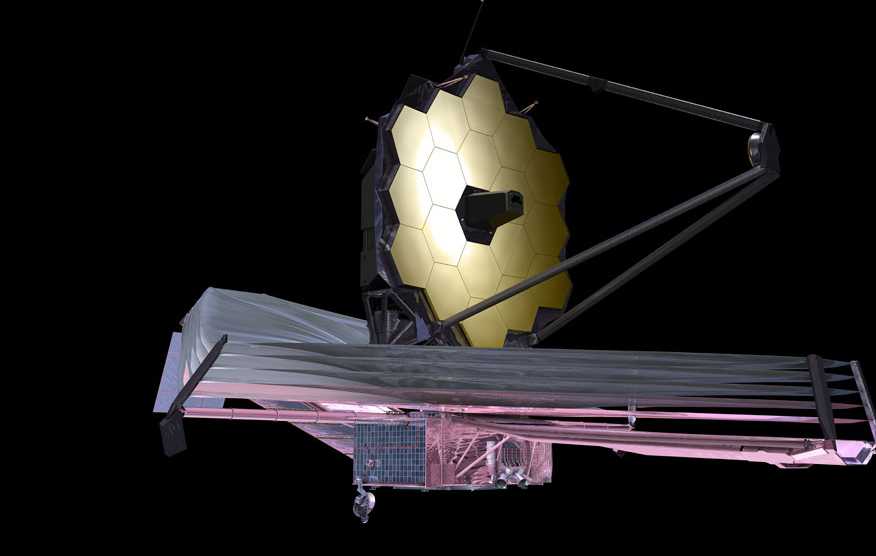JWST
The James Webb Space Telescope (JWST) will be the next big space telescope and the successor of the famous Hubble Space Telescope. JWST has a 6.5m deployable primary mirror that will passively cool to 50K behind a very large sun-shield. The science instruments include cameras and spectrographs operating in the red, near- and mid-infrared. The JWST will be exceptionally powerful for the study of distant galaxies, including those seen at z > 10 when the first generations of stars lit up a dark Universe, and for cool objects such as forming stars and planetary systems. Current launch date is 2018.
The Institute for Astronomy is involved in JWST in a number of ways:
Prof. Simon Lilly was selected by NASA/ESA as an Interdisciplinary Scientist on the JWST Flight Science Working Group. He is also a member of the external page NIRCam and external page MIRI Instrument Science Teams. While in Canada he was the Canadian Project Scientist for JWST and has been actively involved in the project since its inception in the mid-1990's.
Dr. Adrian Glauser is responsible for the provision of the Swiss hardware contribution to the MIRI instrument, developed at PSI.

